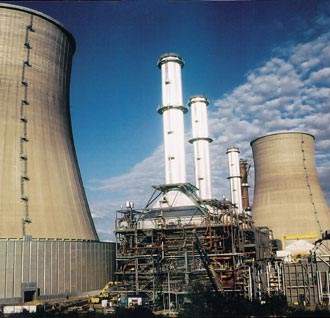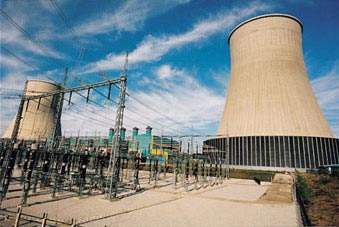The 1,400MW CCGT Bursa plant was built by a consortium led by Mitsubishi Corporation that included the Itochu Corporation and ENKA, a Turkish-based conglomerate. This was awarded the contract in December 1995 after a competitive tender that excited controversy because the Mitsubishi consortium’s bid was practically half the amount it had offered in direct negotiations with the client (TEAS) in 1994.
The power plant is located 1.5km from Ovaakca village, Bursa. The first 700MW combined-cycle power train was put into operation in November 1998. Work on both units was completed in 1999. The plant, the biggest turnkey project in Turkey, produces 10 billion kWh of electricity a year. It achieved its availability guarantee six months ahead of schedule in June 2001.
PROJECT FUNDING AND BACKGROUND
The $518 million plant was financed from Japan. The funding package included $410 million in export credits to be extended via the Export-Import Bank of Japan (Jeximbank) and $108 million in commercial financing arranged by Mitsubishi Bank. The Mitsubishi consortium was the lowest bid from five offers for the gas-fired, combined-cycle plant.
The rapidly expanding industrial city of Bursa, in northwest Anatolia, is the centre of Turkey’s automotive industry. It urgently required a new power plant, as there was a generating shortfall of about 800MW. Negotiations for the new power station began in 1994.
The state Turkish Electricity Generation and Transmission Corp (TEAS) produced 105 billion kWh of electricity in 1997, but the country still needed to import more. In previous years, Turkey had been a net exporter to neighbouring countries, but the Turkish Energy and Natural Resources Ministry reported that electricity demand was increasing at 12% per annum.
Turkey is liberalising its energy industries by offering the transfer of O&M lease rights for large thermal power stations. It is also inviting applications for the completion of hydroelectric power plants according to the Build-Operate-Transfer (BOT) model.
The country operates a number of lignite-fuelled power stations, built in the 1980s with outmoded Eastern European technology. Many of these were shut in the early 1990s because they were deemed too damaging to the environment, but subsequently the government has had to override court closure orders for lignite plants to meet pressing power needs.
PLANT MAKE-UP
The Bursa plant consists of four gas turbine generators, four HRSGs and two steam turbine generators. There are also four antireflective waste heat boilers connected to the gas turbines. The cooling water circulation system uses hyperbolic cooling towers, of the closed-cycle dry type and natural drain. One combined-cycled power train is connected to a 154kV breaker and the other to a 380kV breaker. The plant achieves around 55% gross thermal efficiency in combined-cycle operation.
Mitsubishi was the main equipment supplier while local company ENKA was the main civil works contractor. Other major contractors were Takasago Machinery Works, and Kobe shipyard and machinery works.
Shanahan Engineering was contracted to provide construction management and technical direction services for the construction of the two multi-shaft MHI 701F gas turbines, with two MHI steam turbines and two MHI Kobe HRSGs.
The gas and steam turbines were assembled on site from component form. Shanahan Engineering’s responsibilities included overseeing the assembly of the main equipment from installation through to commercial operation. The company was also contracted to produce detailed erection and commissioning procedures manuals for the main equipment.
FUEL SUPPLY
The Bursa CCGT plant consumes about 1,700m³ of natural gas every year. The gas is supplied by Russian Gazprom’s export subsidiary, Gazexport, which supplies gas through a pipeline deep under the Black Sea to Turkey.
The 1999 earthquake damaged the gas distribution network in Bursa but Gazexport’s pipelines were not affected. Gas shipments were reduced to about 70% of previous daily volumes but this did not hinder operation of the Bursa power station.





